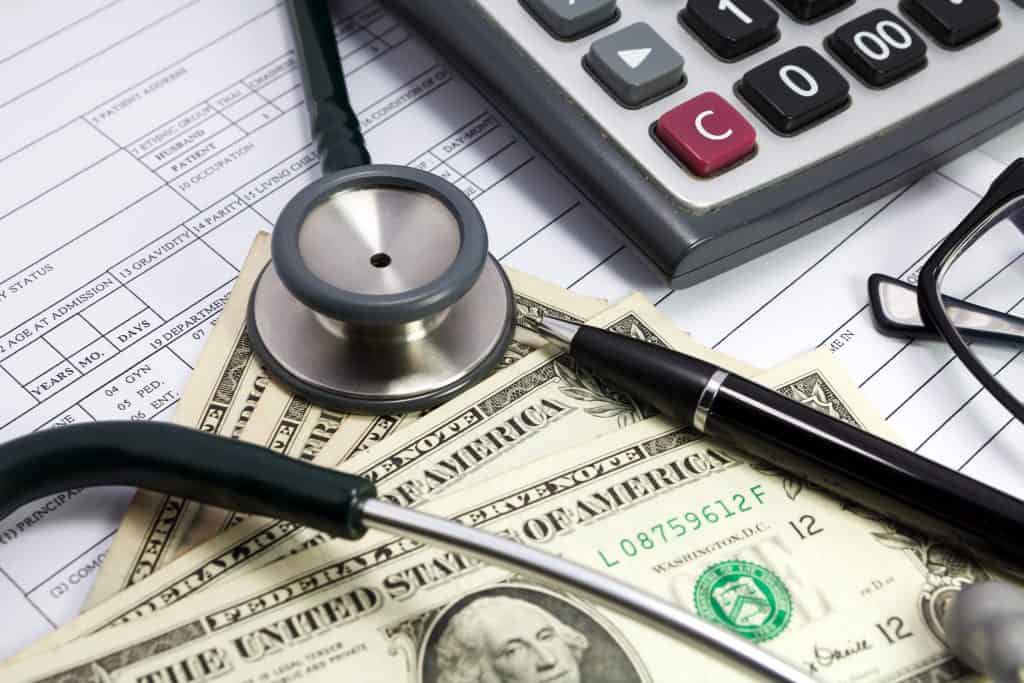
Medical costs are rising across the United States, and patients are left paying a bigger percentage of the bill. Most Americans, whether their health insurance is provided through an employer, the Affordable Care Act exchange or the open market, are paying a higher share of their medical care costs than ever before through increased copays and deductibles.
Pharmaceutical costs are rising drastically as well, as consumer are paying a greater share of those costs and some insurers are providing no coverage for high-priced drugs.
With medical and drug costs rising so significantly, Americans who experience a serious illness can find themselves facing thousands or even tens of thousands of dollars in medical bills that aren’t covered by insurance. According to the Kaiser Family Foundation, the average cost-sharing amount for those covered by employer plans rose 77 percent from 2004 to 2014. Among patients using Affordable Care Act Marketplace plans, Kaiser found that the average deductible for medical care and drugs was $5,765 for Bronze plans and $3,064 for Silver plans in 2016.
“A lot of consumers … are getting surprised by some of the bills,” says Torben Nielsen, a senior vice president at HealthSparq.com, which provides cost estimates, comparison shopping and other tools to employees of more than 70 companies that have signed up for the program. “We try to take that surprise out of the equation by allowing members to see prices upfront based on their benefits. The more they can educate themselves about prices and plan ahead, the lower the prices they’ll see.”
While it’s hard to do comparison shopping when you’re presented with a cancer diagnosis, it is important to find out prices ahead of time when you can. You wouldn’t renovate you house without getting several estimates, and consumers should learn to look at expensive medical procedures, especially elective ones, the same way.
“You can do the very same in health care. We really encourage users to get several opinions,” Nielsen says. “We really encourage people to do a little more planning upfront when possible.”
You might be surprised by what you find when you survey your options.
“Not all facilities charge the same price for each procedure,” says Christie Hudson, vice president of Medical Recovery Services, which helps patients dispute medical billing errors. She also encourages patients to explicitly state in advance that they want their entire care team to be within their health care network. “We tell them to be proactive ahead of time,” she says. “Make it very clear that you want all in-network doctors.”
It can also save you money if you ask doctors point-blank whether a procedure is actually necessary, or whether a less expensive medication will do just as well for you.
While it’s easier to negotiate prices before the procedure, another way to cut medical costs is to scrutinize your bills afterward. Hudson says that 80 percent of the bills her company reviews contain errors, including charges for bed linens and hospital gowns, which aren’t supposed to be charged for separately.
For pharmaceutical costs, especially for treatment of chronic illnesses, drug companies provide patient assistance programs, which pay all or part of the costs of necessary medications. Patients who pay out of pocket for medications can benefit from pharmacy discount cards and their online coupon equivalents, which provide coupon codes that can discount medications up to 80 percent, says Dr. Richard Sagall, president and co-founder of NeedyMeds.org, which lists discount coupons for prescription medications, pharmacies that provide free or cheap generic drugs and other information about finding lower cost drugs. “It can be a full-time job to find the cheapest drugstore, the best cards,” he adds.
Here are eight ways to get help paying or cutting your medical bills and drug costs:
Apply for pharmaceutical assistance programs. NeedyMeds.com is one of a number of websites that link to drug assistance programs, which all have different rules and qualifications. Patients usually apply on a drug-by-drug basis, and rules change frequently. “Each program is different,” Sagall says.
Check with disease organizations. Some chronic disease funds have information about medical assistance programs or nonprofit organizations that help cover treatment costs.
Know your insurance plan. Most insurance plans have a maximum amount you are required to pay out of pocket per person or per family. Following the rules and choosing in-network providers is an easy way to cut costs. Knowing your plan also helps you realize when you’re not receiving the benefits to which you’re entitled.
Scrutinize your bills. Stories of medical billing errors abound. Ask for detailed, itemized bills, and go through them line by line to make sure all the charges are valid. Dispute any charge you don’t think you owe with an official dispute letter. “It’s always better when you send it in writing,” Hudson says.
Hire a medical billing advocate. Most companies charge a percentage of what they save the customer for their services – Hudson’s company charges about 25 percent. “We don’t want to add any expense to any consumer,” Hudson says.
Do a fundraising campaign. Online campaigns to help pay medical bills are becoming more common, and friends also sometimes do fundraisers to pitch in. Popular sites for this kind of fundraising include GoFundMe.com, YouCaring.com and even PayPal.
Ask for a discount in exchange for paying cash now. Many medical providers will write off a portion of the bill if you agree to pay a certain amount of cash upfront. Medical bills are negotiable, so you shouldn’t hesitate to discuss your bill if it means getting a better deal.
A version of this story appeared previously at U.S. News & World Report.
